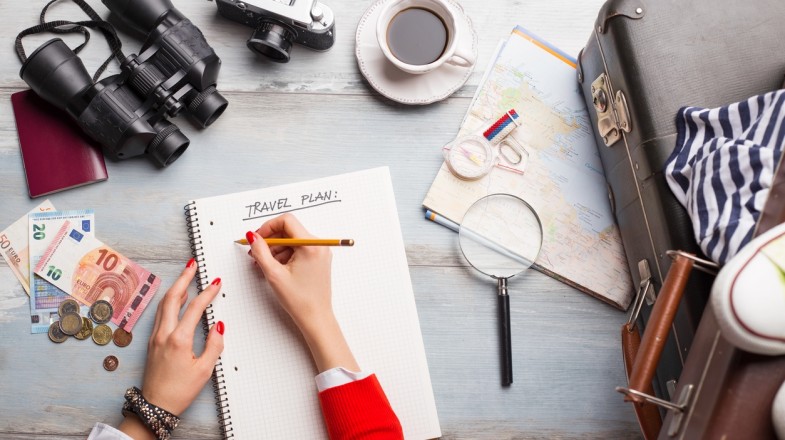Australian Tattoos and The Stories Behind Them: Learn About the Rich Traditions It Is Based On
Introduction
If you ever visit Australia, you may see people with colorful tattoos on their skin. These tattoos tell a story about who they are and where they come from. The designs range from abstract symbols to tribal patterns based on Australian flora and fauna.
The history behind these tattoos is rich with tradition and ancient art forms developed over thousands of years. Here’s everything you need to know about the Aboriginal art form that has become popular all over the world:
Australia’s rich cultural history has left behind a diverse range of traditions and art forms, including the art of tattooing.
Australia is a diverse country with many different cultures. The art of tattooing is one of the oldest forms of art in Australia, dating back thousands of years. Tattoos are used to tell stories about the wearer’s life or heritage, which makes them very meaningful to those who get them.
Tattooing has long been used by Aboriginal people across Australia as part of their spiritual and ceremonial rituals. Tattoos were also used as identifiers for warriors during times when traditional body paint was not available, or when it wasn’t practical (for example during battles).
The use of tattoos goes back thousands of years.
The use of tattoos goes back thousands of years, and they’re still used today as a way to tell stories about the wearer’s life. Tattoos can be used to show the wearer’s heritage, culture and place in society.
In Australia, there are many different Aboriginal tribes with their own unique forms of tattooing. The most common type comes from the Ngunnawal people who lived in what is now known as Canberra (the capital city). They would carve designs onto their skin using sharpened bone or shells dipped into dye made from plants like blackberries or red ochre clay found near Lake Burley Griffin–a large body of water located just north-east of Canberra City Centre where many tourists enjoy boating around on hot summer days!
Aboriginal Australians have been using their body as a canvas for thousands of years.
The practice of tattooing in Australia dates back thousands of years. The first evidence of indigenous Australians using their body as a canvas for art was found on the skin of a woman who died around 3,000 BC, and it’s believed that some tribes have been practicing this for at least 20,000 years.
The tradition continues today with many Aboriginal people getting tattoos as a way to express their identity and culture. For these people, tattoos are used in ceremonies like initiation rites or coming-of-age rituals; they’re also given out as rewards for good behavior or achievements within the community (like graduating from school).
Tattoos are used by both men and women as a way to tell stories about their lives, experiences and culture.
Tattoos are used by both men and women as a way to tell stories about their lives, experiences and culture. They can be used to show your heritage or personal history; they can also be used to commemorate events in your life or those of others around you. Many people will get tattoos that represent the places they’ve been, or even specific people that have had an impact on them in some way.
The most common types of tattoos seen on Australians today are:
- Traditional Aboriginal art (representations of animals)
- Geometric patterns based on different Aboriginal cultures
The designs that adorn the bodies of indigenous Australians often tell stories about the people involved in them.
The designs that adorn the bodies of indigenous Australians often tell stories about the people involved in them. The colors, shapes and patterns act as a way for individuals to connect with their ancestors and express themselves.
The designs can be used for a variety of reasons: some are used as a way to tell their story to others; others are done so they can tell their own story better; still others use tattoos as a form of self-expression or even therapy because they’re an outlet for pain or stress in their life (and who doesn’t want an outlet?).
Many Aboriginal Australians have tattoos that represent their heritage and place in society.
Many Aboriginal Australians have tattoos that represent their heritage and place in society. Tattoos are a way of showing pride in their heritage, as well as where they come from, who they are, and what kind of story they tell.
Tattoos were used by tribal elders to pass down knowledge about the land and its inhabitants through stories written on their skin with bone or shell fragments; these tattoos would then be worn for the rest of one’s life as a reminder of this information. The designs could also represent certain animals associated with certain qualities (for example: the dingo was considered a dangerous animal but also a wise one).
Some Aboriginal Australians have tattoos that display their family’s history on their forearm or hand, depending on the gender of the person wearing it.
Some Aboriginal Australians have tattoos that display their family’s history on their forearm or hand, depending on the gender of the person wearing it. In this way, they can tell others what tribe they belong to without having to speak a word.
When you look at an Aboriginal Australian tattoo and see that there are symbols within it, you may not realize what they mean unless someone tells you otherwise. However, if someone does tell you what those symbols mean and how they apply specifically to them as individuals (or even their entire family!), then it can help deepen your understanding of this rich tradition even further!
There are many different kinds of tattoo styles from around Australia, but they all tell an important story about the wearer’s life or heritage.
There are many different kinds of tattoo styles from around Australia, but they all tell an important story about the wearer’s life or heritage.
Tattoos tell stories about who you are and what you believe in. They can also show where you come from and how long your family has been in that area. If you’re part of an Aboriginal tribe, then it will be important for them to know which clan they belong to by looking at their tattoos.
Australian art is varied and complex, with deep roots in its history
Australian art is varied and complex, with deep roots in its history. The use of tattoos goes back thousands of years, and they can be found on the bodies of Australian Aboriginal people today. The practice has been documented by anthropologists who have studied their culture since the 1800s when European settlers first arrived on these shores.
The tradition of body art has continued over generations as part of an important spiritual belief system that ties together all aspects of life: from birth to death; from food gathering to hunting; from dancing and singing stories around campfires at night to rituals performed during initiation ceremonies (or “coming-of-age” ceremonies).
Conclusion
Australia’s rich cultural history has left behind a diverse range of traditions and art forms, including the art of tattooing. The use of tattoos goes back thousands of years, with evidence of its existence found across the world. Aboriginal Australians have been using their body as a canvas for thousands of years, decorating themselves with designs that tell stories about their lives and experiences. Many Aboriginal Australians have tattoos that represent their heritage and place in society; others have tattoos that display family history on their forearm or hands depending on gender


